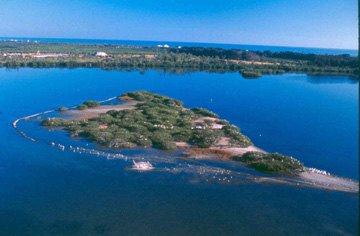At the start of the 20th century, hunters were killing so many pelicans for feathers that the birds were disappearing from Pelican Island, off the Atlantic coast of Florida. So a group of local businessmen and conservationists convinced President Teddy Roosevelt to do something about it. In March of 1903, Roosevelt established Pelican Island as a federal bird refuge. It was America’s first national wildlife refuge, as well as its first marine protected area — a section of land or water where human activities are limited.
 Today, there are more than 1700 marine protected areas in the United States. Some are overseen by the federal government, while others are in state or local hands. Most of them are along the coast, but some are entirely in the water, protecting coral reefs and other delicate habitats.
Today, there are more than 1700 marine protected areas in the United States. Some are overseen by the federal government, while others are in state or local hands. Most of them are along the coast, but some are entirely in the water, protecting coral reefs and other delicate habitats.
These parks and refuges shield fish, birds, and other creatures from overfishing, habitat loss, and pollution. They also protect the water quality, as well as beaches, marshes, and other types of land.
The most restrictive protected areas are marine reserves —areas where little or no human presence is allowed. The largest encompasses many of the smaller islands of Hawaii, and covers an area almost as big as the state of California.
Many marine protected areas, though, are open to fishing, recreation, and other activities. But restrictions on these activities make the water a little clearer, the beaches a little whiter, and the fish — and birds — a little more abundant.

